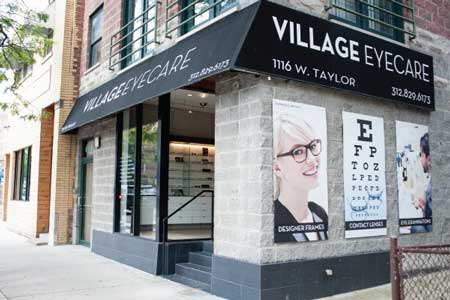Neurologist Andalusia: Specialist Neurological and Eye Treatment Solutions
Neurologist Andalusia: Specialist Neurological and Eye Treatment Solutions
Blog Article
Comprehending the Various Vision Improvement Procedures Available for Clearer Sight
In the world of vision modification procedures, a plethora of alternatives exist to resolve refractive mistakes and provide people with clearer sight. From the commonly recognized LASIK surgical procedure to less invasive procedures like PRK and implantable lenses, the area of ophthalmology supplies a variety of techniques tailored to match different requirements and choices. Each procedure includes its own collection of factors to consider, benefits, and possible risks. Comprehending the subtleties of these vision correction techniques is important for making informed choices concerning one's aesthetic health and wellness. Allow's check out the details of these procedures and clarified the path to attaining boosted vision clearness.
LASIK Surgery
LASIK surgery is a typical refractive treatment used to remedy vision issues such as nearsightedness, farsightedness, and astigmatism. This medical method, which means Laser-Assisted in Situ Keratomileusis, intends to reshape the cornea to boost exactly how light is concentrated on the retina, ultimately improving vision quality. Throughout the procedure, a thin flap is developed on the cornea, and a laser is used to get rid of precise quantities of cells to improve it suitably. This reshaping allows for light to be accurately focused onto the retina, correcting refractive errors.
One of the key benefits of LASIK surgical procedure is the rapid improvement in vision experienced by patients. Generally, LASIK surgery is a preferred choice for individuals looking for a lasting solution for their vision issues.
PRK Treatment

PRK is a suitable alternative for individuals with slim corneas or those at a higher risk of eye injuries, as it does not include developing a corneal flap. The recuperation procedure for PRK is somewhat longer compared to LASIK, as the epithelium requires time to restore. Patients might experience pain and fuzzy vision for a couple of days following the procedure.
Despite the longer recovery time, PRK can yield outstanding cause vision enhancement, making it a useful option for those that may not appropriate candidates for LASIK surgical treatment. - Eye Center Andalusia
Implantable Lenses
As opposed to PRK where the cornea is improved straight, implantable lenses use an additional technique for remedying vision by inserting synthetic lenses inside the eye. This procedure is especially helpful for people with high levels of astigmatism, nearsightedness, or farsightedness that may not appropriate candidates for laser surgical procedures like LASIK or PRK.
Implantable lenses, additionally called phakic intraocular lenses, job by supplementing the eye's all-natural lens with a fabricated one. These lenses see this website can be placed before the all-natural you could try these out lens (anterior chamber) webpage or behind the iris and in front of the all-natural lens (posterior chamber) By readjusting the power and positioning of these lenses, ophthalmologists can efficiently remedy refractive mistakes and boost aesthetic acuity.
One advantage of implantable lenses is that they are removable and exchangeable, supplying flexibility for future changes. Nonetheless, as with any surgery, there are threats entailed, such as infection or cataract formation. Clients considering implantable lenses need to talk to an eye treatment professional to identify the most appropriate alternative based on their specific requirements and eye health.
Corneal Rings

The treatment for inserting corneal rings is relatively quick and minimally invasive, typically done as an outpatient treatment. Throughout the surgical procedure, the eye doctor makes a tiny laceration in the cornea and inserts the rings at a details deepness. As soon as in place, the rings help to improve the cornea, providing a smoother surface area for light to get in the eye, which can cause more clear vision.
Corneal rings are taken into consideration a reversible procedure, as they can be eliminated or changed if necessary. While they may not entirely eliminate the demand for glasses or get in touch with lenses, corneal rings can considerably improve vision top quality and general visual convenience for individuals with keratoconus or other corneal abnormalities.
Refractive Lens Exchange
Complying with the improvement of corneal abnormalities with treatments like corneal rings, another vision adjustment strategy that can address refractive mistakes is Refractive Lens Exchange (RLE) RLE is a surgery that involves changing the eye's all-natural lens with a synthetic intraocular lens (IOL) to fix refractive mistakes such as presbyopia, nearsightedness, and farsightedness. This treatment is especially advantageous for individuals that might not be appropriate candidates for treatments like LASIK or PRK as a result of elements such as slim corneas or high refractive errors.
RLE is akin to cataract surgical treatment, as both entail getting rid of the eye's natural lens; however, in RLE, the lens is clear, not over cast as in cataracts. The fabricated lens dental implanted during RLE can be tailored to attend to the individual's specific refractive mistake, providing clear vision at different ranges. Healing time for RLE is reasonably quick, and individuals can anticipate improved vision right after the treatment. Just like any kind of surgery, possible risks and issues exist, so an extensive consultation with an eye treatment specialist is necessary to figure out if RLE is the ideal vision modification alternative.
Verdict

In the world of vision adjustment treatments, a multitude of options exist to deal with refractive errors and provide people with more clear view.LASIK surgical procedure is an usual refractive treatment utilized to remedy vision issues such as nearsightedness, astigmatism, and farsightedness.While additionally a typical refractive treatment, the PRK (Photorefractive Keratectomy) technique varies from LASIK surgical treatment in its approach to remedying vision problems.Complying with the modification of corneal abnormalities with procedures like corneal rings, an additional vision adjustment strategy that can address refractive mistakes is Refractive Lens Exchange (RLE) LASIK surgery, PRK procedure, implantable lenses, corneal rings, and refractive lens exchange are all alternatives that can deal with different vision issues.
Report this page